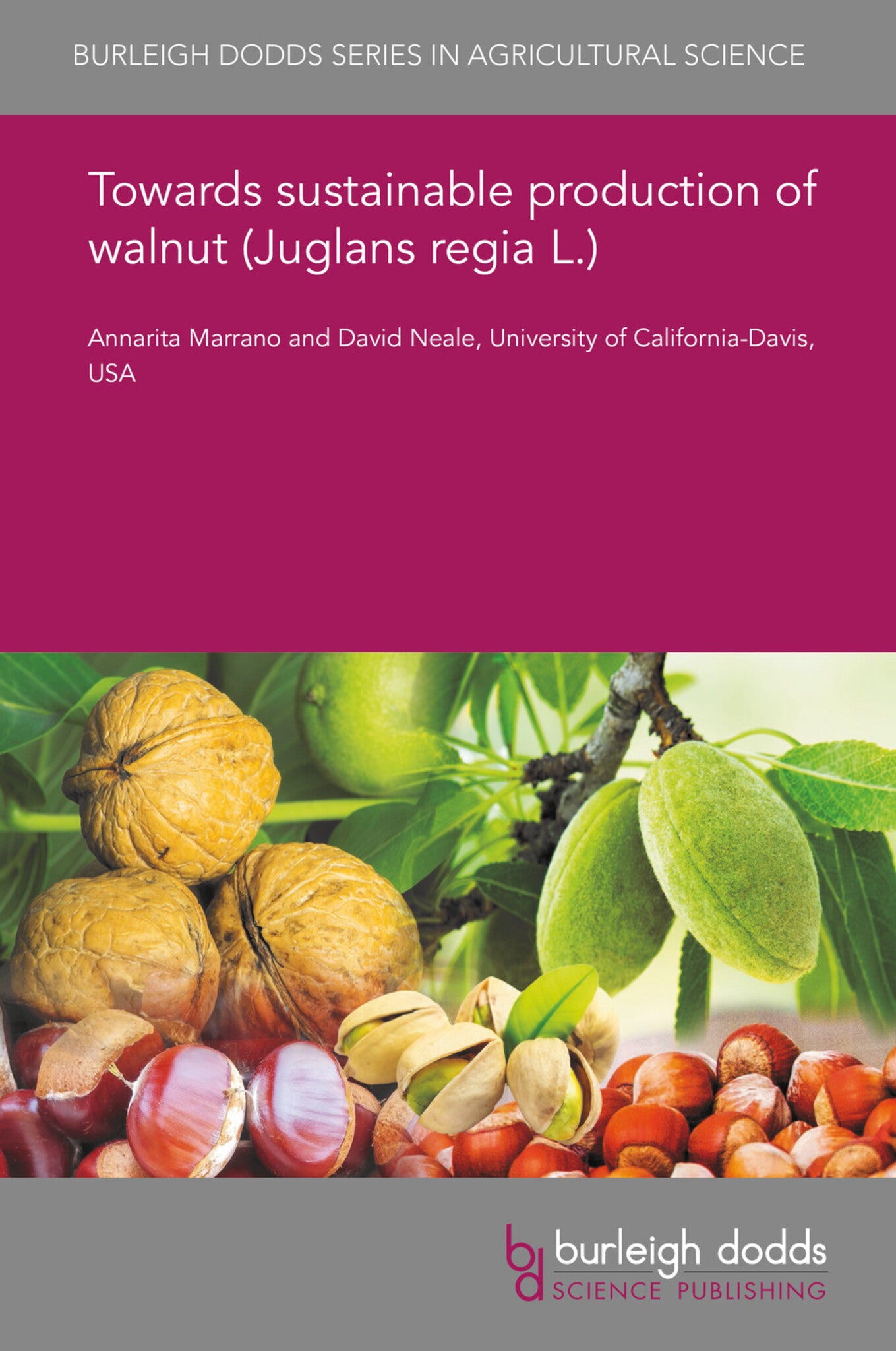We're sorry. An error has occurred
Please cancel or retry.
Towards sustainable production of walnut (Juglans regia L.)
Regular price
£25.00
Sale price
£25.00
Regular price
£25.00
Unit price
/
per
Sale
Sold out
Re-stocking soon
Persian walnut (Juglans regia L.) is the only species of the genus Juglans widely cultivated for nut production. Over the last 20 years, global walnut production has grown by almost 250%, with Chin...
Read More

Some error occured while loading the Quick View. Please close the Quick View and try reloading the page.
Couldn't load pickup availability
- Format:
-
16 December 2018

Persian walnut (Juglans regia L.) is the only species of the genus Juglans widely cultivated for nut production. Over the last 20 years, global walnut production has grown by almost 250%, with China, the United States and Iran as leading producing countries. This enormous growth is mainly attributed to an increase in regular consumption of walnut due to its high nutritional value and numerous benefits to human health. Walnut breeding programmes are facing the challenge of increasing production sustainably because of climate change and human population growth. This chapter reviews recent efforts and achievements in ecologically and economically friendly walnut cultivation. The chapter describes different practices that have been applied in this direction, such as the development of new cultivars with genetic resistance to biotic and abiotic stresses, the identification of solutions for reducing input consumption, and the exploration and conservation of genetic diversity in walnut.

Price: £25.00
Publisher: Burleigh Dodds Science Publishing
Imprint: Burleigh Dodds Science Publishing
Series: Burleigh Dodds Series in Agricultural Science
Publication Date:
16 December 2018
ISBN: 9781838797706
Format: eBook
BISACs:
TECHNOLOGY & ENGINEERING / Agriculture / Sustainable Agriculture, Agronomy and crop production, TECHNOLOGY & ENGINEERING / Agriculture / Tropical Agriculture, TECHNOLOGY & ENGINEERING / Agriculture / Agronomy / Crop Science, Botany and plant sciences, Sustainable agriculture, Pest control / plant diseases

1 Introduction 2 Sustainable solutions for disease control in walnut 3 Adaptation to environmental changes in walnut 4 Yield 5 Future trends and conclusion 6 Where to look for further information 7 References



